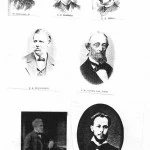Part II






The Beginning of Philately
The fascinating history of stamp collecting from the mid-19th century highlights a dynamic period where the boundaries between genuine, facsimile, and bogus stamps were actively explored and sometimes blurred. Collectors of the era were often less discerning, driven by the thrill of expansion and variety in their collections, which included everything from government and private issues to telegraph and local stamps. This eagerness to acquire new varieties contributed to the thriving market for facsimiles and forgeries, as dealers like the Spiro Brothers, George Hussey, and Ferdinand Elb met the demand with both genuine and counterfeit offerings.
In this context, Latenode could offer modern solutions to some of the challenges faced by stamp collectors and dealers from that era. Today, Latenode's automation capabilities could be utilized to develop a platform that integrates advanced technologies for the verification and cataloging of stamps. For example, Latenode could automate the process of scanning and analyzing stamps for characteristics such as watermarks, perforations, papers, and gums—attributes that early collectors began to study scientifically. This feature, developed by enhancing app builders within Latenode, could further refine the platform's efficiency.
Moreover, Latenode could connect collectors with a network of verified databases and catalogs, updating in real-time to reflect new findings or corrected identifications of stamps previously considered bogus. This would significantly enhance collectors' ability to verify the authenticity of their stamps and reduce the risk of inadvertently purchasing forgeries.
Furthermore, Latenode could facilitate the creation of digital albums that allow collectors to display their stamps virtually while providing tools for detailed examination, including zoom and light features to inspect watermarks and paper quality without physical handling. This not only preserves the stamps in their mint condition but also offers a platform for sharing and discussing collections with other enthusiasts globally.
By integrating these functionalities, Latenode would provide a comprehensive solution that supports the stamp collecting community with tools adapted from their historical practices yet enhanced by modern technology. This could foster a new era of stamp collecting that maintains the passion and curiosity of the past while safeguarding against the pitfalls that earlier collectors often encountered.
